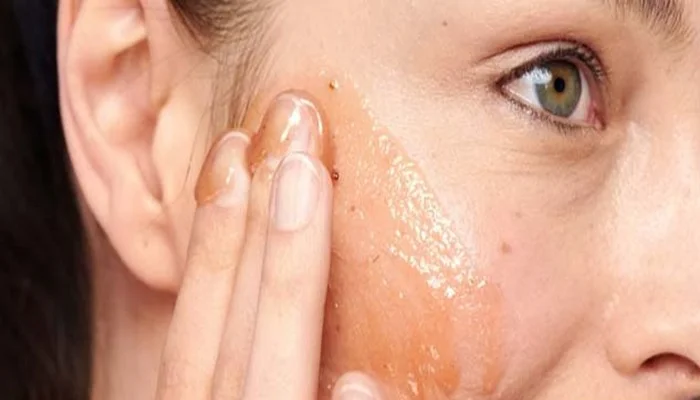Liquid exfoliants have become a cornerstone in modern skincare, offering a gentle yet effective method for maintaining healthy skin. Unlike traditional scrubs that physically slough off dead skin cells, liquid exfoliants utilize chemical agents to achieve smoother, brighter skin. This article delves into the workings of liquid exfoliants, their benefits, and how to incorporate them into your skincare routine.
What Are Liquid Exfoliants?
Liquid exfoliants are skincare products that contain active ingredients designed to dissolve dead skin cells and promote cell turnover. They typically feature chemical exfoliants such as Alpha Hydroxy Acids (AHAs), Beta Hydroxy Acids (BHAs), and Polyhydroxy Acids (PHAs). These acids work by breaking down the bonds that hold dead skin cells together, allowing them to be easily removed from the skin’s surface.
Types of Liquid Exfoliants
Alpha Hydroxy Acids (AHAs): These are water-soluble acids derived from fruits and milk. Common AHAs include glycolic acid and lactic acid. They are particularly effective for dry or sun-damaged skin as they help improve moisture content and enhance skin texture.
Beta Hydroxy Acids (BHAs): Salicylic acid is the most well-known BHA. It is oil-soluble, making it ideal for oily and acne-prone skin as it penetrates deeper into pores to help clear out excess oil and debris.
Polyhydroxy Acids (PHAs): These are similar to AHAs but have larger molecules, which means they penetrate the skin more slowly. PHAs are suitable for sensitive skin types as they provide gentle exfoliation without causing irritation.
How Do Liquid Exfoliants Work?
Liquid exfoliants function through a process called chemical exfoliation. This involves the application of acids that interact with the uppermost layer of the skin, promoting the shedding of dead cells and stimulating new cell growth.
Mechanism of Action
Dissolving Bonds: The primary action of AHAs and BHAs is to dissolve the bonds between dead skin cells on the surface. This process allows for easier removal of these cells during regular cleansing or through natural shedding.
Promoting Cell Turnover: By facilitating the removal of dead cells, liquid exfoliants encourage faster cell turnover, leading to fresher, more youthful-looking skin.
Improving Skin Texture: Regular use of liquid exfoliants can smooth out rough patches, reduce the appearance of fine lines, and enhance overall skin texture.
Brightening Effect: By removing dulling dead skin cells, liquid exfoliants can lead to a brighter complexion almost immediately after application.
Benefits of Using Liquid Exfoliants
Enhanced Absorption: By clearing away dead skin cells, liquid exfoliants allow subsequent skincare products to penetrate more effectively, maximizing their benefits.
Unclogging Pores: BHAs are particularly effective in unclogging pores, which helps prevent breakouts and reduces blackheads.
Improved Skin Tone: Regular use can help fade hyperpigmentation and even out skin tone by promoting a more uniform surface.
Gentle on Skin: Unlike physical scrubs that can cause micro-tears in the skin, liquid exfoliants provide a gentler alternative that is less likely to irritate sensitive skin types when used correctly.
Suitable for All Skin Types: With a variety of formulations available, there is a liquid exfoliant suitable for every skin type—from oily to dry and sensitive.
How to Incorporate Liquid Exfoliants into Your Routine
Step-by-Step Guide
Choose the Right Product: Select a liquid exfoliant based on your skin type and concerns. For example:
- Oily or acne-prone skin may benefit from salicylic acid.
- Dry or sun-damaged skin may respond better to glycolic acid.
Patch Test: Before using any new product extensively, perform a patch test on a small area of your skin to check for any adverse reactions.
Start Slowly: If you are new to chemical exfoliation, start with once or twice a week to allow your skin to adjust. Gradually increase frequency based on your tolerance.
Application Method:
- After cleansing your face, apply a small amount of liquid exfoliant onto a cotton pad.
- Gently swipe it across your face, avoiding sensitive areas like the eyes.
- Allow it to absorb before applying additional products like serums or moisturizers.
Follow Up with Sunscreen: Chemical exfoliation can increase your skin’s sensitivity to sunlight; therefore, always apply sunscreen during the day when using these products.
Common Mistakes to Avoid
Over-exfoliating: Using liquid exfoliants too frequently can lead to irritation and compromised skin barrier function.
Neglecting Moisturizer: Always follow up with a moisturizer after applying an exfoliant to keep your skin hydrated.
Skipping Sunscreen: Protecting your skin from UV damage is crucial after using any form of exfoliation.
Potential Side Effects
While liquid exfoliants offer numerous benefits, they can also cause side effects if not used properly:
Irritation: Overuse can lead to redness, peeling, or irritation.
Sensitivity: Increased sensitivity may occur; therefore, it’s essential to monitor how your skin reacts.
Photosensitivity: Chemical exfoliation can make your skin more susceptible to sun damage; hence sunscreen is vital.
Conclusion
Liquid exfoliants represent an innovative approach to skincare that offers significant benefits for maintaining healthy and vibrant skin. By understanding how they work and how best to incorporate them into your routine, you can achieve smoother texture, improved tone, and overall healthier-looking skin. Whether you choose an AHA or BHA-based product, consistency is key in reaping the full rewards of these powerful skincare allies.
Related topic:
Does Vacuum Blackhead Remover Work?


